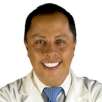The new Multi-professional Patient Safety Curriculum Guide released by the World Health Organization (WHO) in October 2011 promotes the need for patient safety education to improve the safety of care. The comprehensive guide assists universities and schools in the fields of dentistry, medicine, midwifery, nursing and pharmacy to teach patient safety.
It also supports the training of all health-care professionals on a number of priority patient safety concepts to improve learning about patient safety.
World Health Organization Director-General Dr Margaret Chan, said that “one of the greatest challenges today is not about keeping up with the latest clinical procedures or the latest high-tech equipment. Instead, it is about delivering safer care in complex, pressurized and fast-moving environments. In such environments, things can often go wrong. Adverse events occur. Unintentional, but serious harm comes to patients during routine clinical practice, or as a result of a clinical decision.”
Dr Cho added that WHO, “working with governments, universities and schools worldwide, international professional associations in the disciplines of dentistry, medicine, midwifery, nursing and pharmacy and their related student associations, have made patient safety education relevant to the needs and requirements of contemporary workforce environments. The combined energy, resources and expertise have been essential in developing the Multi-professional edition of the Patient Safety Curriculum Guide. The fruits of applying its recommendations will be immediate and measurable in terms of building the knowledge and skills of health sciences students that will better prepare them for safer practice”.
Sir Liam Donaldson, Envoy for Patient Safety of the World Health Organization, stated that “Commitment to patient safety worldwide has grown since the late 1990s. This was prompted by two influential reports: To Err is Human, produced by the Institute of Medicine in the USA, in 1999 and An Organization with a Memory, produced by the United Kingdom Government’s Chief Medical Officer in 2000. Both reports recognized that error is routine during the delivery of health care and occurs in around 10% of hospital admissions. In a proportion of cases, the harm produced is serious, even fatal.
“Since the publication of these two influential reports, the quest to improve the safety of care for patients has become a global movement. This has led to a remarkable transformation in the way that patient safety is viewed. Having begun as a subject of minority academic interest, it is now a firm priority for most health- care systems.
Yet, the current state of patient safety worldwide is still a source of deep concern. As data on the scale and nature of errors and adverse events have been more widely gathered, it has become apparent that unsafe care is a feature of virtually every aspect of health care”.
Sir Donaldson added that “the WHO Curriculum Guide is a comprehensive programme for effective student learning about patient safety. It highlights the key risks of health care and how to manage them, shows how to recognize adverse events and hazards, report and analyse them. It teaches about team-work and the importance of clear communication across all levels of health care, whilst emphasizing the importance of engaging with patients and carers to build and sustain a culture of patient safety”.
For more information visit www.who.int/patientsafety/en and www.who.int/patientsafety/education/curriculum/en/index.html.
Download the Multi-professional Patient Safety Curriculum Guide at: whqlibdoc.who.int/publications/2011/9789241501958_eng.pdf.
Patient safety and infection control are important topics in healthcare, both in the developed and developing parts of the world. The Organization for ...
In a report on a preclinical investigation titled “Flagellin Enhances Saliva IgA Response and Protection of Anti-caries DNA Vaccine,” lead ...
Debido a las considerables variaciones sobre a la definición, práctica, regulación y formación de los higienistas dentales en los estados miembros de la...
Enrique Jadad describe la importancia de conocer las técnicas más actuales del tratamiento de la enfermedad periimplantar a raíz del auge de los ...
Ofrecer el mejor servicio al cliente para realizar procesos odontológicos seguros y prevenir infecciones es un compromiso por el que W&H Sterilization ha ...
La marca GMI presentó en República Dominicana nuevos productos e importantes conferencias científicas durante el reciente Congreso ...
El Dr. Guido Perona Miguel de Priego es un reconocido profesional de la odontopediatría latinoamericana y autor o coautor de libros y ...
Calidad profesional sin concesiones: no solo en la compra de productos nuevos de salud, sino también en el servicio. W&H ProService es el estándar para la...
El lenguaje profesional es sin duda alguna una de nuestras mejores cartas de presentación. Lamentablemente, lo hacemos a un lado y nos enfocamos en hablar ...
La compañía Crosstex ha demostrado con hechos que está comprometida a ayudar y proteger a profesionales sanitarios de todo el planeta.
Webinars en vivo
vie. 3 de mayo 2024
11:00 CST (Mexico City)
Webinars en vivo
mar. 7 de mayo 2024
18:00 CST (Mexico City)
Webinars en vivo
jue. 9 de mayo 2024
18:00 CST (Mexico City)
Webinars en vivo
lun. 13 de mayo 2024
7:00 CST (Mexico City)
Webinars en vivo
lun. 13 de mayo 2024
11:00 CST (Mexico City)
Doc. MUDr. Eva Kovaľová PhD.
Webinars en vivo
mié. 15 de mayo 2024
8:00 CST (Mexico City)
Prof. Dr. med dent. David Sonntag
Webinars en vivo
mié. 22 de mayo 2024
10:00 CST (Mexico City)
Dr. Nikolay Makarov DDS, MSC, PhD.



 Austria / Österreich
Austria / Österreich
 Bosnia y Herzegovina / Босна и Херцеговина
Bosnia y Herzegovina / Босна и Херцеговина
 Bulgaria / България
Bulgaria / България
 Croacia / Hrvatska
Croacia / Hrvatska
 República Checa y Eslovaquia / Česká republika & Slovensko
República Checa y Eslovaquia / Česká republika & Slovensko
 Francia / France
Francia / France
 Alemania / Deutschland
Alemania / Deutschland
 Grecia / ΕΛΛΑΔΑ
Grecia / ΕΛΛΑΔΑ
 Italia / Italia
Italia / Italia
 Países Bajos / Nederland
Países Bajos / Nederland
 Nórdico / Nordic
Nórdico / Nordic
 Polonia / Polska
Polonia / Polska
 Portugal / Portugal
Portugal / Portugal
 Rumania y Moldavia / România & Moldova
Rumania y Moldavia / România & Moldova
 Eslovenia / Slovenija
Eslovenia / Slovenija
 Serbia & Montenegro / Србија и Црна Гора
Serbia & Montenegro / Србија и Црна Гора
 España / España
España / España
 Suiza / Schweiz
Suiza / Schweiz
 Turquía / Türkiye
Turquía / Türkiye
 Reino Unido e Irlanda / UK & Ireland
Reino Unido e Irlanda / UK & Ireland
 Internacional / International
Internacional / International
 Brasil / Brasil
Brasil / Brasil
 Canadá / Canada
Canadá / Canada
 EE UU / USA
EE UU / USA
 China / 中国
China / 中国
 India / भारत गणराज्य
India / भारत गणराज्य
 Japón / 日本
Japón / 日本
 Paquistán / Pākistān
Paquistán / Pākistān
 Vietnam / Việt Nam
Vietnam / Việt Nam
 ASIA / ASEAN
ASIA / ASEAN
 Israel / מְדִינַת יִשְׂרָאֵל
Israel / מְדִינַת יִשְׂרָאֵל
 Algeria, Morocco & Tunisia / الجزائر والمغرب وتونس
Algeria, Morocco & Tunisia / الجزائر والمغرب وتونس
 Oriente Medio / Middle East
Oriente Medio / Middle East
:sharpen(level=0):output(format=jpeg)/up/dt/2024/04/Jesus-Garcia-Urbano_Expodental-2024.jpg)
:sharpen(level=0):output(format=jpeg)/up/dt/2024/04/MarioElias-Fig1.jpg)
:sharpen(level=0):output(format=jpeg)/up/dt/2024/04/Ariel-Labanca_lecture-sequence.jpg)
:sharpen(level=0):output(format=jpeg)/up/dt/2024/04/Fig-1_Ramirez-P.jpg)
:sharpen(level=0):output(format=jpeg)/up/dt/2024/04/Dental-filling.jpg)










:sharpen(level=0):output(format=png)/up/dt/2023/03/ACTEON_NEW-logo_03-2024.png)
:sharpen(level=0):output(format=png)/up/dt/2014/02/3shape.png)
:sharpen(level=0):output(format=png)/up/dt/2022/06/RS_logo-2024.png)
:sharpen(level=0):output(format=png)/up/dt/2019/04/logo.png)
:sharpen(level=0):output(format=png)/up/dt/2023/08/Neoss_Logo_new.png)
:sharpen(level=0):output(format=png)/up/dt/2014/02/MIS.png)
:sharpen(level=0):output(format=jpeg)/up/dt/e-papers/338233/1.jpg)
:sharpen(level=0):output(format=jpeg)/up/dt/e-papers/336829/1.jpg)
:sharpen(level=0):output(format=jpeg)/up/dt/e-papers/329684/1.jpg)
:sharpen(level=0):output(format=jpeg)/up/dt/e-papers/328283/1.jpg)
:sharpen(level=0):output(format=jpeg)/up/dt/e-papers/326428/1.jpg)
:sharpen(level=0):output(format=jpeg)/up/dt/e-papers/323247/1.jpg)
:sharpen(level=0):output(format=jpeg)/up/dt/2011/10/c5ef59add27747a9bf05e7314662225a-1.jpg)

:sharpen(level=0):output(format=jpeg)/up/dt/2024/04/Jesus-Garcia-Urbano_Expodental-2024.jpg)
:sharpen(level=0):output(format=gif)/wp-content/themes/dt/images/dt-user.gif)
:sharpen(level=0):output(format=jpeg)/up/dt/2011/04/d16f7d926c787d6aa7eb39f0bcd6a7a4.jpg)
:sharpen(level=0):output(format=jpeg)/up/dt/2011/11/218f966981fd510a101a08d46f11aaef.jpg)
:sharpen(level=0):output(format=jpeg)/up/dt/2020/12/EDHF-unifies-dental-hygiene-in-common-European-curriculum.jpg)
:sharpen(level=0):output(format=jpeg)/up/dt/2020/03/casos-jacho-sin-marca-agua.002.jpg)
:sharpen(level=0):output(format=jpeg)/up/dt/2020/11/WuH_Sterilization_Award.jpg)
:sharpen(level=0):output(format=png)/up/dt/2017/01/854c5bb0d17014ad58257384cab0d461.png)
:sharpen(level=0):output(format=png)/up/dt/2017/01/e5bbd4e700fd8a6155b6c1e9538dc7d0.png)
:sharpen(level=0):output(format=jpeg)/up/dt/2021/03/1-WH_Service_LISA.jpg)
:sharpen(level=0):output(format=jpeg)/up/dt/2019/03/Pericles-en-la-%C3%A1gora-de-Atenas.jpg)
:sharpen(level=0):output(format=jpeg)/up/dt/2017/01/ae4967184d5688b6f89a64a85433c71c.jpg)













:sharpen(level=0):output(format=jpeg)/up/dt/2024/04/Jesus-Garcia-Urbano_Expodental-2024.jpg)
:sharpen(level=0):output(format=jpeg)/up/dt/2024/04/MarioElias-Fig1.jpg)
:sharpen(level=0):output(format=jpeg)/up/dt/2024/04/Ariel-Labanca_lecture-sequence.jpg)
:sharpen(level=0):output(format=jpeg)/up/dt/e-papers/336829/1.jpg)
:sharpen(level=0):output(format=jpeg)/up/dt/e-papers/329684/1.jpg)
:sharpen(level=0):output(format=jpeg)/up/dt/e-papers/328283/1.jpg)
:sharpen(level=0):output(format=jpeg)/up/dt/e-papers/326428/1.jpg)
:sharpen(level=0):output(format=jpeg)/up/dt/e-papers/323247/1.jpg)
:sharpen(level=0):output(format=jpeg)/up/dt/e-papers/338233/1.jpg)
:sharpen(level=0):output(format=jpeg)/up/dt/e-papers/338233/2.jpg)
:sharpen(level=0):output(format=jpeg)/wp-content/themes/dt/images/3dprinting-banner.jpg)
:sharpen(level=0):output(format=jpeg)/wp-content/themes/dt/images/aligners-banner.jpg)
:sharpen(level=0):output(format=jpeg)/wp-content/themes/dt/images/covid-banner.jpg)
:sharpen(level=0):output(format=jpeg)/wp-content/themes/dt/images/roots-banner-2024.jpg)
To post a reply please login or register